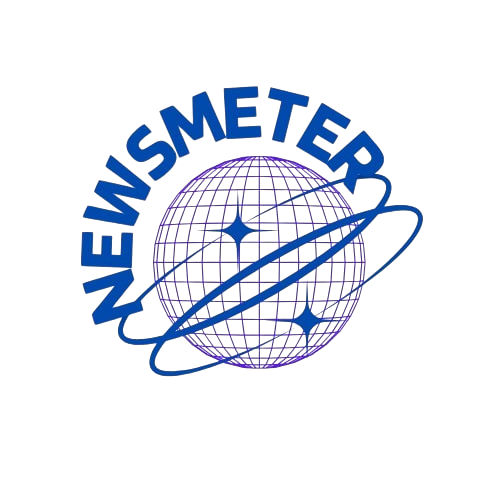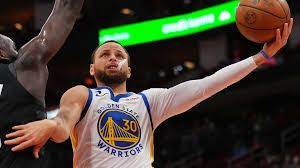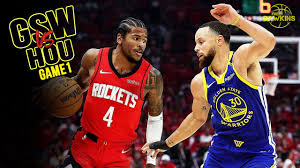In the fast-evolving world of digital innovation, a new wave of technology-infused athleticism is gaining attention—Harmonicode Sports. Though the term might sound unfamiliar to many, it represents a growing niche at the intersection of coding, gaming, music, and sports.
At its core, Harmonicode Sports combines elements of rhythm-based interaction, sports simulation, and competitive programming to create an immersive experience that challenges both mental acuity and physical reflexes.
This emerging concept reflects the way modern society is blending traditional disciplines to offer newer, more inclusive forms of engagement, particularly for youth and digital natives.
Understanding the Concept of Harmonicode
To truly grasp the essence of Harmonicode Sports, it’s important to first understand the word itself. “Harmonicode” is a portmanteau of “harmony” and “code.” This implies a synchronized system where coding or algorithmic logic works in tandem with harmonic or rhythmic elements. In practical terms, it can refer to a digital platform or environment where players interact through rhythmic inputs—often set to music or patterned sequences—to achieve a sports-like goal. Think of it as a hybrid between a music game and a virtual sport, all governed by pre-programmed code that reacts to user actions.
How Harmonicode Sports Work?
In most Harmonicode Sports platforms, users engage in virtual sports simulations, such as running, jumping, throwing, or team-based activities, where the core mechanic involves timing actions in sync with rhythms, visual patterns, or programmed cues. Instead of traditional controllers, these systems often use motion sensors, keyboards, or touch-sensitive devices, making the interaction dynamic and engaging. Points are earned not just by completing actions, but by executing them with precision and rhythm, adding a layer of complexity that mirrors both athletic skill and musical timing.
Some versions even allow users to customize gameplay through coding, offering an educational twist. Players can tweak algorithms, design custom challenges, or set specific music tempos that alter game difficulty. This fusion makes Harmonicode Sports an excellent medium for teaching STEM (Science, Technology, Engineering, and Math) concepts in a fun and interactive way.
The Rise of Virtual and Hybrid Sports
The concept of Harmonicode Sports fits perfectly into the broader trend of hybrid sports, which blend physical movement with digital feedback. With the advent of virtual reality (VR), augmented reality (AR), and wearable tech, traditional sports are being reinvented for the digital age. In this context, Harmonicode Sports acts as a bridge between esports and physical activity, allowing participants to remain physically engaged while immersed in a virtual environment.
Schools, after-school programs, and tech-forward fitness studios have started adopting such platforms to promote movement and creativity, particularly among kids and teens who are more responsive to gamified experiences.
Benefits of Harmonicode Sports
Harmonicode Sports offer a range of benefits that span physical, cognitive, and emotional wellness. From a physical standpoint, these games encourage coordination, timing, and reaction speed, all of which are critical to overall fitness. Cognitively, they improve pattern recognition, spatial awareness, and logical reasoning, especially when the gameplay includes coding elements.
Socially, Harmonicode Sports foster teamwork and collaboration, especially in multiplayer formats where rhythm and timing must be aligned among players. The inclusion of music and rhythm can also have a therapeutic effect, reducing stress and enhancing mood. It’s a platform that promotes inclusivity, where individuals of varying athletic ability can participate meaningfully, regardless of physical limitations.
Education Meets Entertainment
One of the most exciting aspects of Harmonicode Sports is its potential in educational environments. By integrating coding into gameplay, students not only learn basic programming concepts but also see the immediate effects of their code in action. This real-time feedback loop enhances learning retention and encourages experimentation.
Moreover, when paired with curriculum-based objectives, these platforms can teach complex topics such as mathematics, physics, and music theory in a hands-on manner. The gamification of such subjects can transform classrooms into interactive learning labs, making lessons more engaging and effective.
Popular Examples and Platforms
Although still in its early stages, several platforms and games embody the principles of Harmonicode Sports. For instance, rhythm-based fitness games like Beat Saber, Just Dance, and Audica offer movement-based rhythm challenges that could be adapted for educational or competitive sports use. Some custom programming games like CodeCombat or Scratch-based music games are also exploring the blend between rhythm, interactivity, and logic.
In some creative tech competitions, such as hackathons or youth coding camps, students are challenged to create rhythm-based games or sports simulations, essentially crafting their own versions of Harmonicode Sports. These innovations highlight how adaptable and inspiring this niche field can be.
Future Possibilities and Expansion
As technology continues to evolve, so too will Harmonicode Sports. With the integration of artificial intelligence, machine learning, and biofeedback sensors, future iterations may offer personalized training routines, competitive global tournaments, and AI-coaches that adjust difficulty based on user performance.
Additionally, with the rise of the metaverse and immersive virtual platforms, Harmonicode Sports could become a standard feature in digital wellness hubs, schools, or even professional leagues. The potential for cross-industry collaboration is immense—think music producers, game developers, fitness experts, and educators working together to design the next generation of sports experiences.
Bridging Generations Through Technology
One of the lesser-discussed yet powerful aspects of Harmonicode Sports is its ability to bridge generational gaps. While traditional video games or sports may cater to specific age groups, Harmonicode Sports offers something for everyone.
For younger generations, the coding and gaming aspects resonate naturally with their digital upbringing. For older participants, especially those intrigued by rhythm or music, the harmony-based challenges provide a nostalgic yet modern entry point into digital play.
This makes Harmonicode Sports an excellent tool for family engagement or intergenerational learning environments, such as community centers or libraries.
Imagine a grandparent and grandchild collaborating on a rhythm-coded challenge, where each brings their unique strengths—experience and patience from one side, and digital fluency from the other.
These shared experiences promote bonding while subtly reinforcing cognitive and motor skills across age groups.
Inclusion and Accessibility in Harmonicode Sports
A key strength of Harmonicode Sports is its inclusive design philosophy. Traditional sports often exclude individuals due to physical limitations or accessibility barriers. However, Harmonicode Sports can be tailored for differently-abled participants, ensuring that gameplay remains equitable. Features such as voice-activated commands, adaptive controllers, or visual/audio cues allow individuals with limited mobility or sensory challenges to still participate competitively and joyfully.
Furthermore, with an emphasis on rhythm and reaction rather than physical prowess alone, Harmonicode Sports helps redefine what it means to be an “athlete” in the modern world. It elevates cognitive and creative abilities as essential components of performance, thereby widening the scope for participation and recognition.
The Role of Developers and Creators
Developers and creative coders play a crucial role in expanding the Harmonicode Sports landscape. Since the concept hinges on programmable logic paired with rhythm-based interaction, the possibilities for innovation are endless. Independent game developers, hobbyist programmers, and even students can experiment with creating new Harmonicode experiences using tools like Unity, Unreal Engine, Python, or even Arduino for hardware-based interaction.
Online platforms and open-source communities could become breeding grounds for new game modes, challenges, and educational modules. Game jams and competitions could feature categories dedicated to Harmonicode Sports, encouraging young innovators to explore and experiment with blending sports mechanics and harmonic inputs.
As this field grows, we may even see the rise of Harmonicode-specific programming languages or SDKs (Software Development Kits) that simplify the process of creating interactive, rhythm-based sports simulations.
Esports and Competitive Potential
In today’s esports-driven environment, Harmonicode Sports could also evolve into a professional or semi-professional competitive domain. Just as rhythm games have gained international fan bases and tournaments, so too could Harmonicode-based competitions, where coding skills and gameplay accuracy determine success.
Imagine a future where players compete in synchronized matches—coding on the fly to adapt to changes in rhythm, pattern, or opponent behavior. Such competitions would test mental agility, real-time problem-solving, hand-eye coordination, and artistic timing. These tournaments could be hosted online or in hybrid virtual spaces, watched by spectators who appreciate both the skill and spectacle involved.
Integrating Harmonicode in Schools and Curriculums
The educational promise of Harmonicode Sports is too big to ignore. Educators worldwide are always looking for innovative ways to integrate experiential learning into their classrooms. By combining elements of music, coding, and sports, Harmonicode Sports can support curricula in diverse subjects such as:
- Computer Science – through basic to advanced coding mechanics
- Mathematics – via rhythm patterns, logic, and timing intervals
- Physical Education – by encouraging movement and coordination
- Music and Arts – through integration of beats, tempo, and expression
Programs could be designed to include mini-challenges, team-based activities, and assessments that track both physical and intellectual development. Furthermore, these interactive sports are ideal for remote or hybrid learning environments, making them adaptable in today’s changing educational climate.
Corporate and Team-Building Applications
Beyond educational institutions, Harmonicode Sports hold potential for corporate wellness and team-building. Companies are increasingly investing in creative activities that boost employee morale and mental health. A Harmonicode-based session can serve as a lighthearted yet brain-stimulating break, where employees collaborate on rhythm games or code challenges that involve movement and sound.
Such activities not only promote health and stress relief but also help teams build rapport, improve communication, and foster creativity in problem-solving. Over time, Harmonicode Sports could become a staple in workplace wellness programs and leadership retreats.
Environmental and Economic Considerations
Compared to traditional sports infrastructure—like fields, stadiums, or courts—Harmonicode Sports are low-impact and space-efficient. All that’s typically required is a screen, a set of sensors or controllers, and perhaps a compact play area. This makes them particularly suitable for urban environments or communities with limited space and resources.
From an economic standpoint, the cost of entry is also relatively low. Many Harmonicode Sports platforms can be accessed via mobile devices, computers, or standard gaming consoles, making them scalable and accessible across socioeconomic backgrounds. With more open-source and community-driven projects emerging, affordability will continue to improve, making this an ideal model for developing regions and public institutions.
The Future is Harmonically Coded
The evolution of Harmonicode Sports signals an exciting shift in how we perceive play, fitness, and learning. It blends the elegance of musical rhythm, the precision of code, and the engagement of sports into one cohesive, futuristic activity. As society continues to digitize, and as wellness and education seek new avenues for engagement, this genre could very well redefine how the world moves, learns, and competes.
In a world where boundaries between disciplines are fading, Harmonicode Sports represents a bold step forward. Whether you’re a gamer, a student, an athlete, a coder, or just someone curious about the future, there’s something in this harmonious fusion for you. So, the next time you tap a beat, code a sequence, or move to a rhythm—know that you’re participating in a revolution where every beat counts and every move tells a story.
Conclusion: Why Harmonicode Sports Matter
Harmonicode Sports represent more than just a novelty—they are a symbol of how sports, music, and technology can intersect to create inclusive, educational, and entertaining experiences. By combining rhythm, code, and physical interaction, this genre offers a unique platform that engages both mind and body in a meaningful way.
As society becomes increasingly digital, finding creative ways to stay active, learn, and connect is more important than ever. Harmonicode Sports provide a pathway to do just that—making fitness fun, learning engaging, and technology accessible. It’s not just a sport or a game; it’s the future of interactive human performance.
For more, continue to read at newsmetre.com














